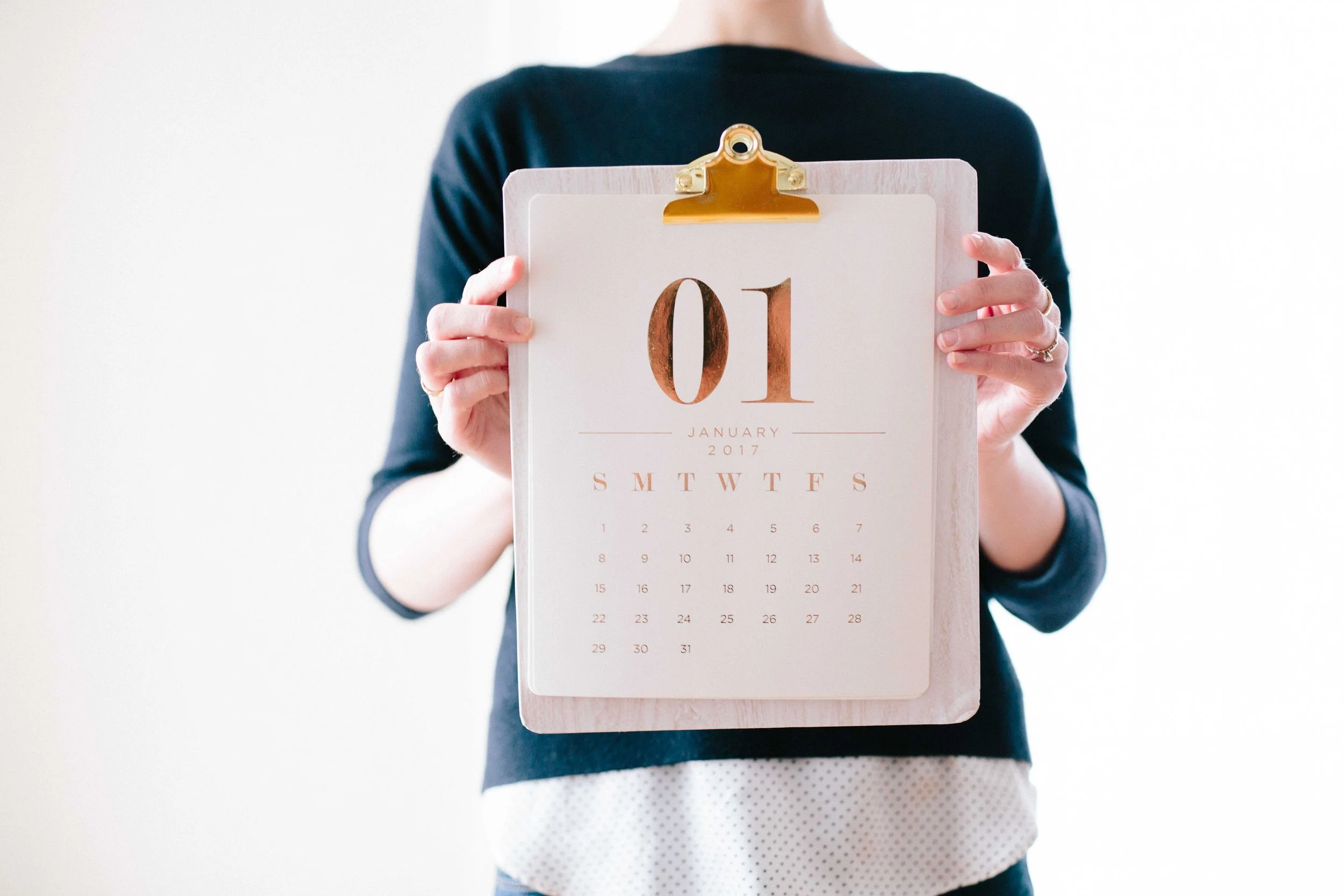How (and Why) to Track Your Cycles for Hormonal Health
Do you track your periods? When was your last period, and what were your hormonal symptoms before/during your period, and at other specific times throughout the month? Do any symptoms (acne, PMS, bloating, mood swings, etc.) get better or worse at specific parts of your cycle? These are really common questions I ask of all of my female patients who are still cycling regularly (aka not menopausal). Learning how to observe and track the timing of your menstrual cycles & symptoms is one of the very first steps in getting to know your hormones and healing underlying hormonal imbalances that may be causing issues. The period and ovulation health are essential health indicators, just like blood pressure and heart rate. Observing your cycles and symptoms each month gives you clues as to what hormones could be out of balance. Cycle tracking also allows you to track improvements in any hormonal symptoms as you make positive lifestyle changes to heal any imbalances. Learning your cycle is also a great way to know when you are most fertile in your cycle (ovulation), to help you get pregnant or avoid pregnancy. Tracking ovulation is a more advanced level of cycle-tracking, and this is outlined in more detail in my next post.
Before we get started, a couple of notes:
Cycle tracking works best when you are actually getting a period at least every 4-5 weeks, and are not on any form of hormonal birth control, read more about this below.
If you’re not having a period at all (or if periods are longer than 5 weeks apart) we can first work together to get your cycles back on track. This is my specialty!
I also love to support women who are on birth control, or women wanting to transition off hormonal birth control and explore more natural methods.
For basic cycle tracking, here are some tips to help you get started:
Pick a Tracker: First, decide how you’ll track your cycles. You can use one of the many period-tracking apps, most of which are free for basic usage. I like Clue, Kindara, MyFLO, Natural Cycles, or TempDrop (pairs nicely with their basal body temp thermometer). You can even track your periods through the FitBit or Apple iWatch apps if you have either of those devices. Basically check out the different apps and see which one you like best! You can also use a journal to track it if preferred, or simply put a dot on a calendar.
Track actual periods (menses):
Note when you get your next period, this is officially “day 1” of the cycle (or enter the first day of your last period, if you recall when it was). Day 1 is typically the first day of more consistent, heavier, red blood flow, and possibly other symptoms like cramps, low back pain, and digestive changes. If you have small amounts of dark brown / dark red spotting, this is not counted as day 1. But do note spotting in the app if it occurs before or after periods, since this can also be an indicator of hormonal imbalance (especially if you’re spotting for multiple days before your actual period starts).
Now keep updating the app daily for each day you have your period. Typical period length is 4-7 days, but could be longer or shorter. Enter your level of flow for that day. Most of the apps will give you easy buttons to click on, to indicate light, medium, heavy flow on that day. You might even consider quantifying the flow in more detail, like “had to change the menstrual cup 3 times”, “changed super tampon or pad 4 times”, “light liner used all day”, etc.
Track Cycle Length:
The “cycle” starts on day 1 of your period, and ends the day before your next period. Then the first day of your next period is the start of a new cycle (day 1). The goal is to continue tracking periods for at least 3 months, to get to know your average cycle length.
Typically the cycle is around 28 days, but it can be anywhere from 25-35 days; the key is whether your cycle length is consistent, vs. one cycle of 25 days, then the next cycle of 35 days. If cycles are much shorter or longer than 28 days, or if there’s large variability in cycle length, this indicates hormones might be out of balance; we can work together to address that first.
Observe Other Cyclical Symptoms:
Now that we have the basics on your period length / flow and overall cycle length, we want to add the next important layer: any other regular monthly symptoms that might fall under the category of ‘hormonal imbalance’. These can be minor or major; basically it’s any symptom you’re having that feels significant to you and is happening every month around the same time. Note these symptoms in your period-tracking app; most apps also have buttons for easily adding specific symptoms on that day. Observing all of these other symptoms helps to establish patterns, which can then be correlated to specific hormonal imbalances. The majority of women will experience symptoms concentrated in the week before or during the period, but symptoms may occur at any other time of the cycle as hormones shift at various times through the entire month.
Also take note of positive changes like higher energy, good mood, motivation, increased libido, etc. Most of the apps also have buttons for this.
Here are some common symptoms, but add any others that you experience:
Acne that seems to get better or worse at specific times of the cycle
Digestive changes, like more bloating, gas, constipation, loose stools, nausea, etc.
Water retention, puffiness, weight gain
Mood swings: includes anxiety, depression/sadness, tearfulness, irritability, anger
Period symptoms:
Cramping so bad that you need pain meds, or pain that interferes with your day in some way
Excessive clotting
Scary heavy flow
Low back pain
Frequent stools, loose stools
Headaches / migraines
Fatigue
Intense cravings (make note of which foods you’re craving specifically)
Changes in sleep patterns
Hot flashes, night sweats
Feeling run-down or like you might be getting a cold
Ovulation pain
Anything else you notice!
Notes about hormonal birth control:
Ideally tracking the cycle is done while NOT on any form of hormonal birth control; this is because most forms of hormonal birth control suppress natural hormonal fluctuations. On hormonal birth control it becomes harder to differentiate which are your body’s natural hormonal symptoms, vs. effects of the synthetic hormones. This is especially true of oral birth control pills, Nuva ring, shots like Depo Provera, or implants like Nexplanon. Even though you are may still be having a ‘period’ while on birth control, this is more of a forced period that’s regulated by the synthetic hormones, so there’s no natural variability in your cycles.
Hormonal IUD’s like Mirena, Liletta, Kyleena, and Skyla work locally to the uterus vs. systemically, so there’s a little more wiggle room with observing cyclical fluctuations and hormonal symptoms through the month. However, these IUD’s can often impact periods and promote other symptoms; often periods might become lighter, more irregular (only get a period every few months), or periods don’t happen at all while you have the IUD. So while it’s still not telling us exactly about your natural periods, it can still be helpful to track symptoms with the hormonal IUD.
Some good news though; if you’re planning to come off birth control, you can start implementing these cycle tracking methods the minute you have your IUD out, or once you finish birth control. I often work with women wanting to transition off hormonal birth control, so I can help you to make sure it goes smoothly.
Notes about missing or irregular periods (amenorrhea):
Has your period gone missing, or are you having very long cycles (more than 2 months between periods)? The first step is to get your period happening regularly again. I can work with you to help bring back your period, since this requires more investigation to figure out the root cause first.
So now you have the basics to begin tracking your cycles; this is the first step for figuring out what’s going on with your hormones. You can even begin tracking a couple of months before we start working together, so we already have this data to assess. I often order hormonal testing including comprehensive blood tests and the DUTCH test to dive deeper into hormonal evaluation, but these tests need to be done on specific days of your cycle. So having this data ready to go allows us to hit the ground running with your lab testing and wellness plan right away. If you want more targeted support with evaluating your cycles and healing your hormonal symptoms, I would love to work with you!



